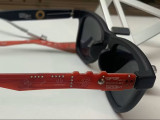The Marineterrein was keen on developing a living lab for new technology and smart city use-cases. Lightwell helped to realize this ambition by combining its Friso Kramer public lighting fixtures with the most promising Smart Lighting technology available: LoRa.
The LoRa technology is a point-to-point internet of things communication system that uses the free available 868mhz frequency. At the Marineterrein Lightwell and technology partner Ziut decided to use a private (non telecom) network to secure its open-source character but also to guarantee the lifespan of the system. This is interesting for large metropolitan area's if they have smart city ambitions because the availably of the network is more secure if the City runs its own network and isn't solely dependent on a network-provider like a telecom-company. LoRa technology is therefore a future-proof system to which al kinds of features (censoring, lighting etc.) can be added.
The whole system set-up is on show at the Marineterrein. The 42 fixture can't be missed because of the beauty of the design by Friso Kramer.
During the We Make the City event 20-24 June 2018 tours will be held to explain the system functionalities.
LoRa Smart Lighting + Lightwell

What is the goal of the project?
To create smart and perfect lighting conditions for the whole area while also taking the design aspects of the historic Marineterrein into account. The Friso Kramer LED fixture used here combines both. Also, the LoRa network had to be a private network in so the acces to the network would be both free and easy to use by other parties, besides Lightwell and Ziut.
What is the result of the project?
The goals (combining design + internet of things) where reached. The private LoRa network is accessible via the Loriot backend and the smart lighting is proof of the successful implementation if this innovative technology.
Who initiated the project and which organizations are involved?
-Marineterrein Organisation
-Lightwell
-Ziut
What is the next step?
Since a LoRa network in the Netherlands is a fully functioning point-to-point IoT-network (rolled out by telco KPN) there is nothing anymore that stands in the way of large-scale smart lighting projects. One of the main anticipated objects against getting involved with IoT-networks on a large scale (the potential of the technology becoming deemed outdated by the telco) is now not a valid point anymore since this projects proves that a City can change to a private LoRa-network architecture.
What can other cities learn from your project?
City governments around the globe can learn what it means to own an IoT-network like LoRa. The perceived technological barrier isn't that great after all, the Lightwell/Ziut/Marineterrein LoRa project in Amsterdam shows.





Last night 8 of March we made a small movie about the project. We will update soon. And check out the www.wemakethe.city event, during the event will we do tours around the area to show all including the private gateway system set-up!